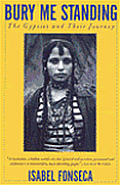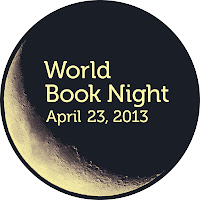In January, I finished two books which are very different in subject, but very similar in appeal, so I decided to review them together. Both books are also composed of connected short stories and each is by a Pulitzer Prize winning author. So let's begin.
I started 2013 by listening to one of the unanimous best books of 2012, the connected short stories in
This is How You Lose Her by Junot Diaz.
Diaz's stories once again bring back the narrator from
The Brief Wondrous Life of Oscar Wao, the irascible but brilliant Junior.
While Junior was there to tell us Oscar's life story in
The Brief Wondrous..., here in a collection of connected stories, Junior is set free to tell us the story of his own life. We see his own story of coming from the Dominican Republic to Patterson, New Jersey. He tells us about the complicated relationship with his older brother, who we know from Oscar Wao will die of cancer, and his mother. And of course, it all centers around a Dominican man's greatest joy, his love of women.
The stories recount Junior's failed relationships, his love of women, and his desire to do good by them, except for the fact that he is always cheating. As a result the overall tone is moving and bittersweet. We see stories of love and loss, and although the structure of the book is nontraditional, the story still moves in a way that is easy to follow.
I should note that the stories do not go in chronological order per se, but their connection is strong enough that the entire book flows as one unit. We get glimpses into Junior's life at various times. Your enjoyment of this book will be dictated by whether or not Diaz sucks you in to loving Junior.
As much as I enjoyed how the stories united to tell Junior's story, I am also enjoying the connection Diaz is creating across all his works by using his alter-ego, Junior, across his oeuvre. As a reader, I greatly enjoy this. Also, Junior is my kind of character-- deeply flawed, but complex. He makes bad choices, but he is not an evil person. I also love how he talks directly to the reader; this draws me in every time. I have been captivated by Junior and can understand why women fall for him.
Another huge appeal here is the lyrical language. Diaz works hard to create stories in which the language flows without making you feel stupid. This is a gift that I treasure each time I read one of his books.
Also, without giving anything away, the last story had great closure. Quite often, a book of short stories leaves you hanging, but although the book is episodic and we only get peeks into Junior's life at a few points, Diaz is able to wrap it all up perfectly at the end. We see the point of the entire book in the final pages of the last story. That was extremely satisfying.
Finally, a note on the audio. Diaz narrates this book. Sometimes author narration don't work, but here I loved it, except for the one story in the book that has a female narrator [otherwise they are all Junior]. It was jarring to hear Diaz start the story only to realize a few minutes in that his "Junior" voice was a woman. In fact, with Brief Wondrous... I both read and listened to it. Now having 2 Diaz listening experiences I think that I prefer his work in audio. When he is reading them, his amazing, lyrical construction flows more naturally. My gringo pronunciation is better than average but does not have the "DR" swagger the text needs. I also enjoy how Junior mixes slang and fancy vocabulary, English and Spanish. This is realistic. Junior, a product of the Patterson projects who has grown to be a university professor, would talk this way. It is little details like this which make Diaz's work so enjoyable, and in audio this brilliance shines even more brightly.
Three Words That Describe This Book: Character Driven, Lyrical, Connected Stories
Readalikes: In the past I have posted
here about readalikes for Diaz. But in considering a new suggestion for this post, I had one name that kept popping in my head--
Philip Roth.
Okay, now you think I am crazy, but hear me out here. Both authors write intricate stories set in urban Northern New Jersey (Roth's Newark to Diaz' Patterson). While they are separated by over a generation, both men contemplate their place as ethnic minorities in their work using the first person narration of an alter ego, often one who is also a writer. Finally, both authors have frank discussions of sexuality and sexual situations in their work. See, not as different as you first thought.
You can also see the end of this post for more read alike options.
But first, another critically acclaimed episodic novel,
A Visit From the Goon Squad by Jennifer Egan.
In this case, I would call this novel more of a novel in stories than a book of connected stories. Let me explain. Egan's novel spans from the 1970s until about 2020 and is centered around two characters, Bernie, a record executive, and his long time assistant, Sasha. The novel as a whole tells each of their life stories, but the narrators constantly change; in fact Bernie and Sasha only get 1 chapter each.
The stories move in a conscious way, although I have to admit it took me a few stories to get in the groove. I thought it was all haphazard at first, but it is not. Each chapter flows into the next as one character who either appeared in the previous story or was somehow featured, takes over the next one. The connection get stronger as the book moves on. It was awesome and fulfilling as a reader. I felt the crescendo building even though the stories jumped around in space and time. The result is a novel that is consciously constructed, but not difficult to follow. It was intricate without being obtuse.
And, in case you didn't get it, the last story takes the guy who appears in the first story (narrated by Sasha) and lets him have his turn years later, only he interacting with Bernie this time. The circle closes, and despite the complex style of the work, you feel like it all resolved. Maybe a circle is the wrong shape, since the story flows, but in a twisted way. Maybe it is more of a double helix.
Since each story has a different narrator, each also has a different style. In fact, this is one of the best things about the novel. Each chapter draws us into the narrator's world view by relating the action of the chapter in their own style. The words flow differently, the people are described differently, the dialogue changes all depending on who is narrating. In the biggest stylistic shift, Sasha's daughter tells us her story in power point form. An author less devoted to creating this novel-in-stories would not have the attention to detail here that Egan does. It really enhanced the experience of reading the work as a whole, as well as increasing my enjoyment of each individual piece.
It should also be noted that there is a psychological darkness in Egan's work that is different from the moving, bittersweet darkness in Diaz. In
This Is How You Lose Her, Junior is a good guy who makes bad choices, but in
A Visit From the Goon Squad, there is more than just bad choices going on. There are seriously messed up people sprinkled throughout, including our "protagonists." But amidst the melancholy, despair, and lying, there are moments of tenderness, joy, and hilarity. This is an entrancing and compelling novel that looks deep into human nature and comes back with a troublingly, but realistic, verdict.
Three Words That Describe This Book: Novel in Stories, Character Driven, Psychological
Readalikes: In my updated Haruki Murakami readalike for NoveList published in late 2012, I said this:
For readers looking for a female author who writes like Murakami, try Pulitzer Prize winning novelist Jennifer Egan. Like Murakami, Egan writes character-centered, complexly layered narratives that shift points of view. She crafts tales of alienation and lost love that carry a haunting and thoughtful tone. Murakami fans should try A Visit from the Goon Squad, in which music plays a central role. In a story that spans from the 1970s until 2020, Egan recounts the lives of a punk rocker turned music executive and his secretary, using interconnected stories that shift points of view and are written in different styles. One chapter is even in the form of a Power Point presentation. Readers of Murakami will appreciate the novel’s experimental nature, while being drawn to the larger metaphysical questions it raises.
When I was reading this novel, I was reminded of
The Art of Fielding by Chad Harbach. Although this is a more traditional novel, there are multiple points of view that jump around frequently, creating that episodic feel. And it is a character driven, psychological story.
Click here for more from me on The Art of Fielding.
It also reminded me of
Building Stories...a lot! And that was my favorite book I read in 2012!
Readalikes For Both Books: Although I have pointed out the differences in these two novels created out of smaller stories, these books do both appeal to fans of literary, character driven fiction that is original, and interesting without being too long. In fact, I have heard readers of both of these books tell me that they don't normally like short stories, but these books they liked.
Personally, I always enjoy books of short stories, especially by authors I admire, so this made me think about why these two novels elicit this response from people who don't consider themselves short fiction fans.
Here's what I came up with.
These episodically told yet still intricate stories are very satisfying to literary fiction readers who love the detailed character development and layered stories of larger novels, but don't want to immerse themselves into a huge tome at the moment. The readalike options are also on the darker side of mood, just like the
This is How You Lose Her and
A Visit From the Goon Squad. One final note, while not all of the books below are all explicitly novels in story, these are collections (and authors) that I feel will appeal to fans of books I am reviewing here.
The following list of suggestions are linked by these appeal factors:
















